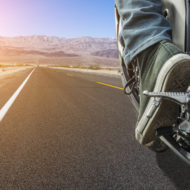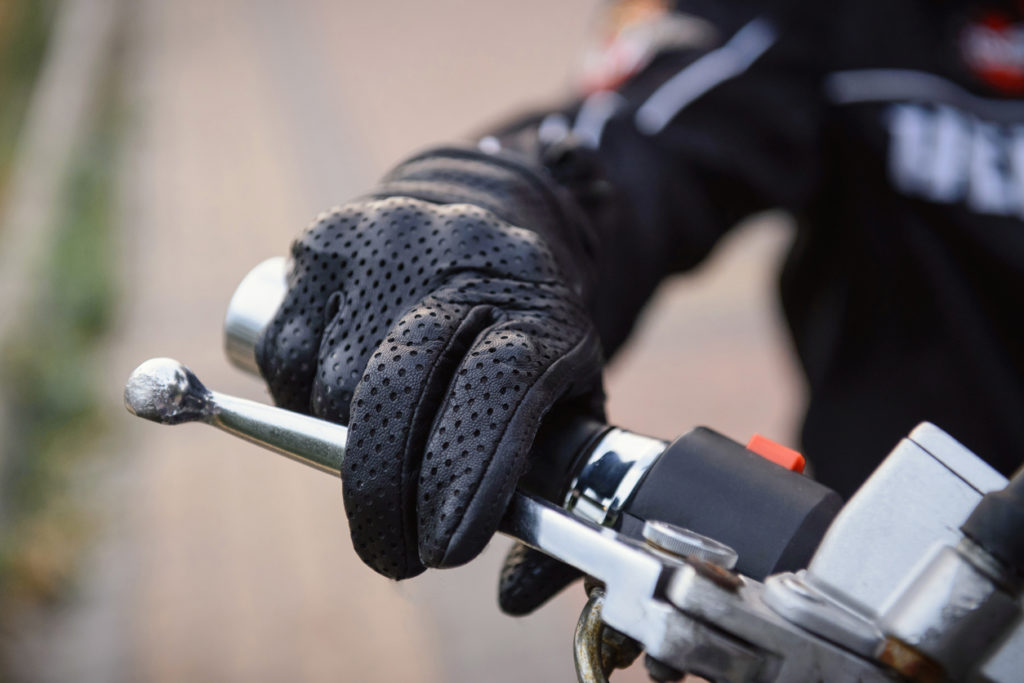How do you use the brakes on your bike? Do you use the rear brake only, or the front only? Do you use both? Does your bike have linked brakes that apply both front and rear automatically? Do you rely on engine braking?
Do you brake only while the bike is upright, or do you trail brake into the corner?
Consider how a motorcycle reacts under brakes. If you use the front brake there will be a weight transfer forward to the front. In extreme cases if the suspension is able to bottom out the rear wheel can lift off the ground. If you use the rear brake the bike will still have a forward weight shift but it will also try to push the rear tyre into the road.
Use the front brake…
Some riders are too scared to use their front brake, or use it to its full potential. They might have heard stories of riders being pitched over the handlebars, or feel uncomfortable with the forward shift that occurs. This severely hampers stopping, most of the braking comes from the front.
…and the rear.
The rear brake is great for stabilising the bike. Some people use only the rear brake when on dirt or gravel. It is also good for low speed maneuvering.
Effective braking can occur when both brakes are used in conjunction with one another. Applying the rear brake can make the bike squat down, making the tyre’s contact patch larger.
Good braking is progressive, don’t just grab a handful of front brake and crush the brake lever as hard as you can. Although it will take less than a second to apply maximum pressure, it is applied with increasing pressure during that time. And maximum pressure is usually slowly released as progress is retarded.
Engine braking
You also need to consider engine braking. Some people like to mash the gear lever down as the bike slows. Although it sounds impressive, unless the gear change is timed so the engine revs in the new gear match the bike’s speed you run the risk of losing control. If you change down too soon, the engine could well have to over rev to match the speed. With a closed throttle this can lead to rear wheel lookup.
Engine braking is controlled by matching engine and wheel speed. You will hear experienced riders giving a rev between gears to help match speeds. This makes for smooth changes and helps the rider maintain control.
Some modern bikes, such as those with quick shifters or use electronics to manage speed, will automatically blip the throttle on downshifts. In addition, some high performance bikes have slipper clutches, designed to prevent the rear wheel from locking on downshifts caused by excessive engine braking.
When to brake
It is a good idea to get most, if not all, of your braking done while the bike is upright. Experienced racers and riders sometimes trail brake, maintaining some braking effort as they lean over and corner, but they still get the majority of the braking completed while upright to maximise tyre grip.
Braking should be as smooth as possible. The smoother you are, the more stable the bike. The more stable the bike, the shorter the stopping distance. And, if you’re on a track, the sooner you can get the throttle wide open again…

